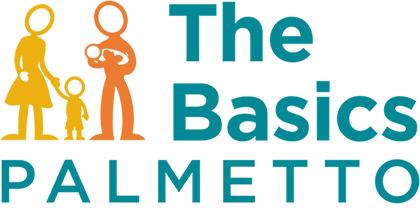Young children are born “movers.” A child’s first 12-18 months of life are filled with exciting “movement milestones!”
- Learning to raise her head and look around
- Raising up his torso while having tummy time on the floor
- Flailing tiny arms and kicking newborn feet during diaper changes
- Rolling over, scooting, and crawling
- Taking those first wobbly steps
- Learning to run, fall, and get back up again
And that’s just the beginning of a young child’s relationship with movement and play!
There’s a reason young children have boundless energy and are wired to move. Science shows that for a child’s brain to fully mature, it needs stimulation through movement and sensory experiences. Each stage of development comes with new opportunities for learning. For example, an infant might explore by touching, grasping, chewing, or crawling. A toddler might explore by walking or climbing.
Physical activity and curiosity don’t simply build a strong body; they build a strong brain!
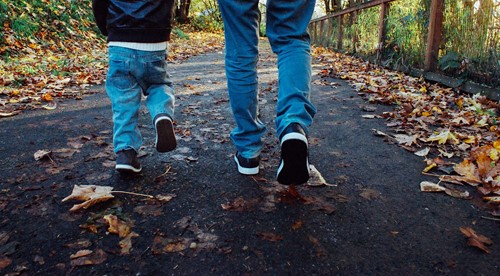
When your baby is crawling, when your toddler is climbing the ladder to the slide, when your preschooler is tossing a ball, they are actually building the architecture of their rapidly developing brain. As young children explore their surroundings, their brains build mental maps of places and spaces.
This is why “Explore Through Movement and Play” is one of the 5 Basics that every child needs to get a great start in life!
Here are 7 simple ways for parents to encourage exploration through movement and play:
1. Give your baby regular “tummy time.” When they lift their head to look around, they strengthen the upper body and prepare muscles to crawl. They also get a new view of their surroundings.

2. Play peek-a-boo. This game teaches infants that objects and people exist even when hidden. It’s also a fun way to bond with your child! Best of all, you can play games like this during everyday activities like diaper changes or bath time.
3. Make art. Drawing, even if it’s just scribbling with crayons on scrap paper, is a good way for little hands to build strong muscles and for little minds to develop creativity.
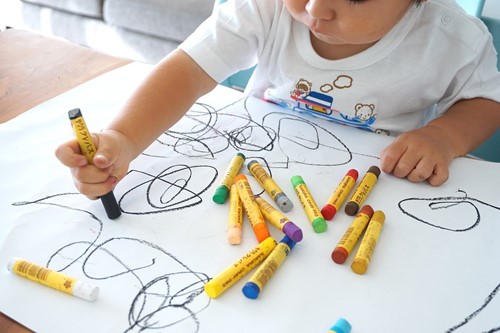
4. Get outside as much as possible and encourage natural exploration wherever you are. Grass, leaves, flowers, and rocks are all fascinating to young children! The world is a brand new place for them and they learn by engaging with the everyday objects of their home and outside world. As your child explores, point to objects and say things like, “This is a leaf. It falls from the tree.” (This is a great way to do Basic #2: Talk, Sing, and Point!)
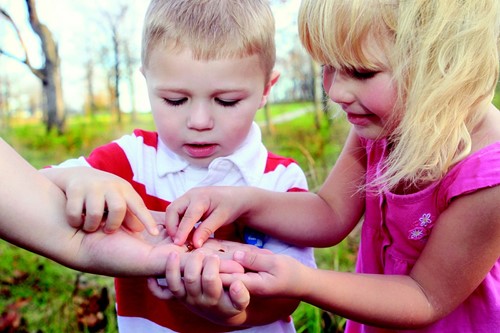
5. Build an obstacle course indoors. Use blankets, pillows, or boxes. See if your child can go over, under, around, and through these objects.
6. Use “position words.” Whether you’re at the park or indoors, use words like over, under, near, far, through, and around as your child engages in these activities.
7. Visit the playground. Climbing, swinging, jumping, and hanging from monkey bars provide outlets for a young child’s boundless energy while also building strong bodies and brains.
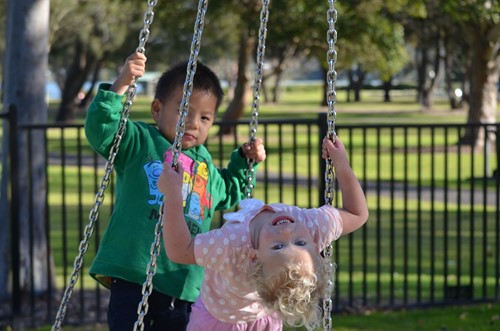
Though movement and play come naturally to babies and young children, we live in a world where television screens, computer monitors, and smart phones are part of everyday life. It’s tempting to rely on devices and digital entertainment for your young child instead of making sure they get plenty of physical activity and natural play.
Because 80% of brain development happens in the first three years of life, it’s important to seize the opportunity and give your child a great beginning! The more you practice “The Basics,” the more they will become a simple part of everyday life for you and for your child.
Know that when you put away the screen and encourage your child to engage with the real world around them, you are building a powerful brain, preparing them for school and for life!
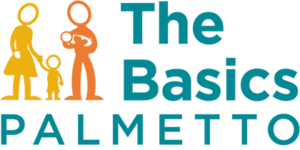
The Basics are 5 fun, simple and powerful ways that every parent can give every child a great start in life!
Here are some resources that can help you on your journey:
- Watch this short video for encouraging ways that real parents are helping their young children “Explore Through Movement and Play” in everyday life. Click on the tips at the bottom of the page for Infants 0-12 months and Toddlers 12-24 months.
- Receive regular, FREE resources from The Palmetto Basics.
- Follow The Palmetto Basics on Facebook and Twitter. We provide encouraging, real-life, shareable content to help parents and caregivers!
- If you, your faith community, your organization, or your place of business would like to join us as a Champion for Children, contact us! palmettobasics@gmail.com.
Thanks for sharing this post and spreading the word about The Palmetto Basics to those within your circle of influence!
